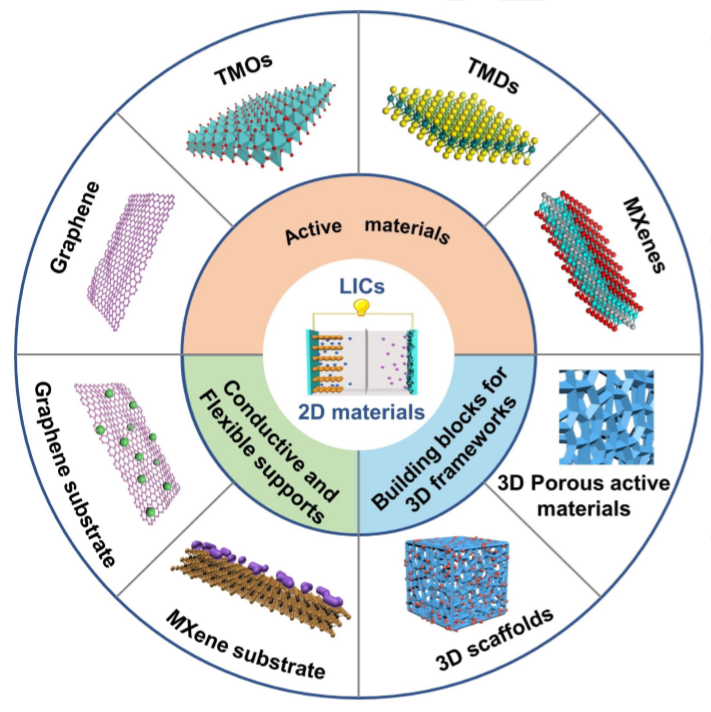F. Su, X.C. Hou, J.Q. Qin, Z.-S. Wu*
Batteries & Supercaps, 2020, 3, 10-29.
DOI: 10.1002/batt.201900153 [PDF]

Lithium‐ion capacitors (LICs) composed of a battery‐type electrode and a capacitor‐type electrode are highly competitive candidates for next‐generation electrochemical energy storage devices, simultaneously achieving high energy and power densities. However, the present LICs are still hindered by the imbalance of electrode kinetics and capacity of anode and cathode. Recently, two‐dimensional (2D) materials with unique structure and appealing properties have received extensive attentions for applications in LICs, with remarkable improvement from charge storage capacity to reaction kinetics. Herein, we review the recent advances in the applications of 2D materials for high‐energy and high‐power LICs. The key advantages and important roles of 2D materials are emphasized for the construction of LICs, including electrochemical active materials, ultrathin conductive and flexible supports for hybridization with other active materials, and 2D functional building blocks for assembling macroscopic hierarchical 3D frameworks. Finally, the challenges and prospects associated with the applications of 2D materials for high‐performance LICs are discussed.